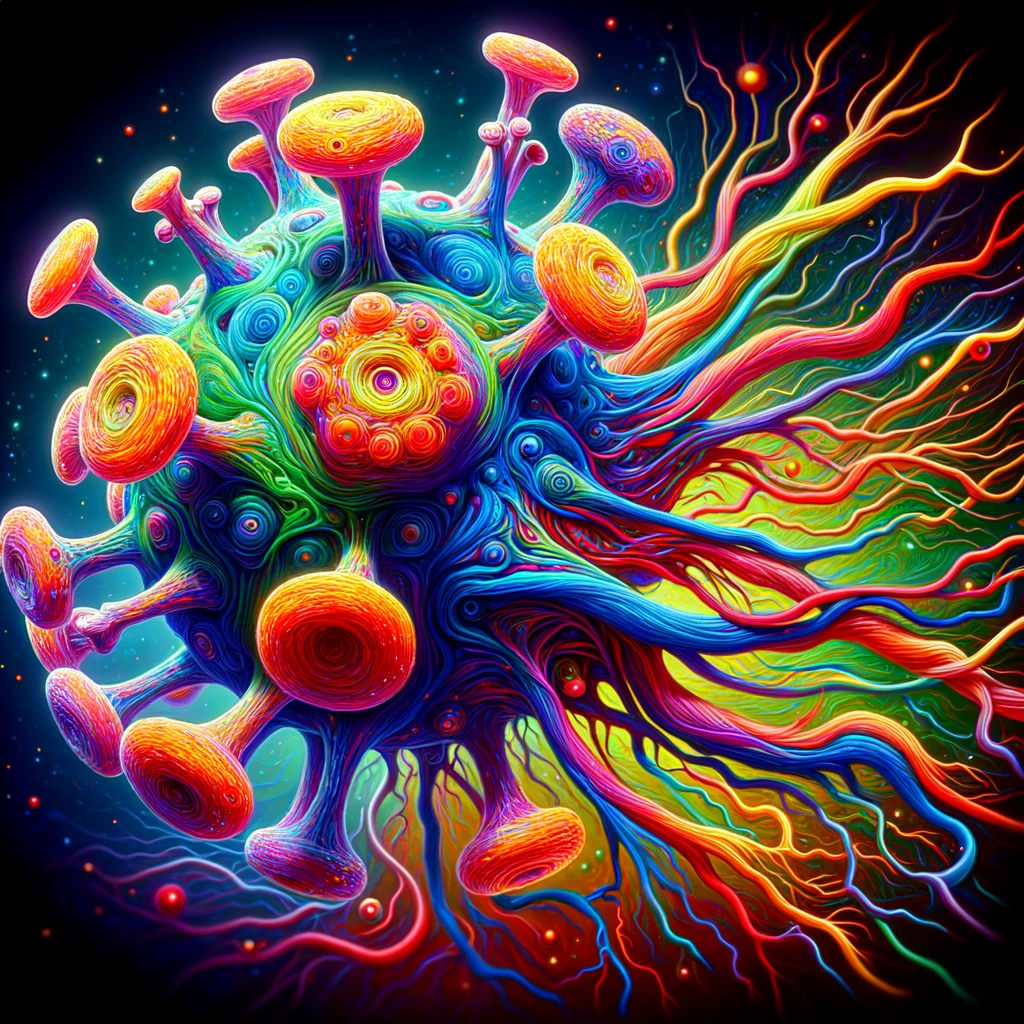Introduction
In a groundbreaking revelation, recent scientific studies have started to uncover a potential link between the Epstein-Barr Virus (EBV) — best known for causing mononucleosis or “mono” — and various forms of dysautonomia, including Postural Orthostatic Tachycardia Syndrome (POTS), as well as other nerve damage conditions. This connection, while still under investigation, offers new insights into the complexities of neuroimmune interactions and their impact on human health.
Background on Epstein-Barr Virus (EBV)
The Epstein-Barr Virus, a prevalent pathogen, is part of the herpesvirus family and is known for causing infectious mononucleosis, often referred to as “mono.” EBV is incredibly common; it’s estimated that up to 95% of adults worldwide have been infected with the virus at some point in their lives (1). The virus is typically transmitted through saliva and can lead to symptoms like fever, sore throat, and swollen lymph nodes. While most individuals recover without serious issues, EBV remains dormant in the body and can be reactivated, particularly in immunocompromised individuals.
Understanding Dysautonomia
Dysautonomia refers to a group of conditions that result from a malfunction of the autonomic nervous system (ANS), the part of the nervous system responsible for controlling involuntary bodily functions such as heart rate, blood pressure, and digestion. One of the most common forms of dysautonomia is Postural Orthostatic Tachycardia Syndrome (POTS), characterized by an excessive increase in heart rate upon standing. POTS can lead to a variety of symptoms, including dizziness, fatigue, and palpitations, significantly affecting the quality of life (2). The exact causes of dysautonomia are varied and can include genetic predisposition, autoimmune disorders, and, as recent studies suggest, viral infections.
The Epstein-Barr Virus: A Ubiquitous Culprit
EBV, a member of the herpesvirus family, is one of the most common human viruses. According to the Centers for Disease Control and Prevention (CDC), as many as 95% of adults between 35 and 40 years of age have been infected with EBV at some point in their lives (1). While the virus is typically associated with mild symptoms, its latent presence in the body has been a subject of concern and curiosity among researchers.
Linking EBV to Dysautonomia and Nerve Damage
Recent studies have started to uncover potential mechanisms through which EBV could trigger or exacerbate conditions like POTS, a form of dysautonomia characterized by an abnormal increase in heart rate upon standing, and other types of nerve damage.
- EBV and Autoimmune Responses: A study published in the “Journal of Medical Virology” suggests that EBV can trigger autoimmune responses in susceptible individuals, potentially leading to dysautonomia (2). The virus has been known to stay dormant in the body and can reactivate, possibly affecting the nervous system.
- POTS and EBV: A separate research study in the “Clinical Autonomic Research” journal found a significant number of POTS patients tested positive for recent EBV infection, indicating a possible connection between the two (3). POTS patients often report symptoms that started after an infection, including those consistent with EBV.
- Neurological Impact: EBV’s role in nerve damage comes into focus with research showing its potential to infect nerve cells. This can lead to a cascade of immune responses, potentially resulting in nerve damage and conditions such as Guillain-Barré syndrome, as outlined in “Neurology” (4).
Implications for Treatment and Management
These findings open new avenues for the treatment and management of dysautonomia and nerve damage. Understanding the role of EBV could lead to more targeted therapies that address the underlying viral and immune factors contributing to these conditions.
Conclusion
The connection between EBV and conditions like dysautonomia and nerve damage represents a significant step forward in our understanding of these complex disorders. As research continues, there is hope for more effective treatments, bringing relief to those suffering from these debilitating conditions.
References
- Centers for Disease Control and Prevention. “About Epstein-Barr Virus (EBV).” CDC EBV
- “Journal of Medical Virology.” (2018). “Epstein-Barr Virus and Autoimmune Responses in Patients with Autoimmune Disorders.”
- “Clinical Autonomic Research.” (2017). “Postural Orthostatic Tachycardia Syndrome and Epstein-Barr Virus.”
- “Neurology.” (2016). “Epstein-Barr Virus and Neurological Diseases.”


